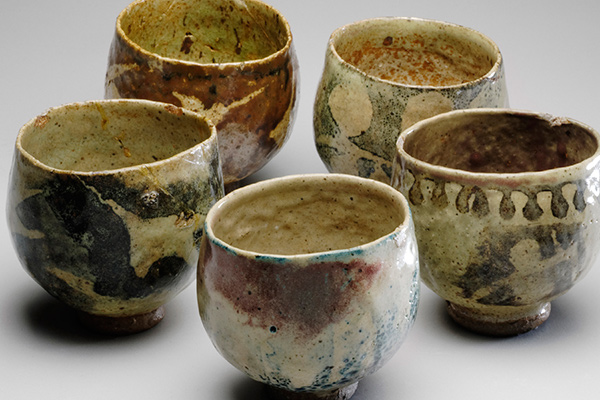Barry Brickell - His Own Steam
Exhibited until 1 March 2015
The DPAG is clearly into ceramics at the moment and I have been enjoying the refreshing change from paintings to pottery.
Barry Brickell is one of the pre-eminent contemporary potters working in New Zealand and is a pioneering figure in the development of contemporary indigenous art. This exhibition is the first retrospective survey exhibition of Brickell’s pottery, bringing together more than 80 works collectively. Each piece is taken from the Dowse Art Museum’s collection, which is over 60 years in the making, and Brickell’s own private one. The exhibition also displays publications on Brickell’s work, published by the Auckland University Press. The Dowse Art Museum’s senior curator, Emma Bugden, and sociologist David Craig curated some aspects of the exhibition, too.
Brickell was born in 1935 in New Plymouth and was raised on Auckland’s North Shore. When he was 15 years old he met the talented potter Len Castle, who would become his life long mentor and close friend. While still in his teen years, Brickell co-founded the North Shore Ceramic Society, the first “formal” potters’ group in New Zealand. In his last year at Takapuna Grammar he worked an after-school job at a gas station and a brickworks, where he would use the commercial kiln to fire his own pots.
In the early 50s Brickell attended Auckland University to study science and joined the New Zealand Forest Service as a trainee intern. After that he became a teacher in the Coromandel. Left unfulfilled with teaching, he threw himself into a full-time career as a potter and, since then, hasn’t looked back.
The works are made out of salt-glazed terracotta and each piece shares a similar aesthetic – organic colours, indigenous patterns and unrefined rendering of the clay, which have a distinctively native feel to them – specific to Brickell. New Zealand’s natural environment is one of his greatest inspirations. The salt glazing, especially, makes the work look less like mismatched tea sets and more like art(ifacts).
According to Brickell, salt glazing was once a key part in the development of commercial pipe production at the brickworks Brickell used to work at, and he quickly became partial to the distinctively “antique, nitty-gritty” style of the brick pipes – so much so that he transferred it to his own work.
My favourite piece is the “Salt-Glazed Dog” (1989), which opens the exhibition. Its curvy body, small feet and upturned nose work together to create an almost comical representation of an every day thing. However, rather than just being cute, Brickell’s distortions and close attention to small details turn the viewer’s attention to the craft of making the piece itself. The surface of the dog, with all of its lumps, bumps and lines, really highlight Brickell’s raw working and reworking creative process.
Another highlight for me were the “Spiromorphs,” his most well known forms, which are large-scale spiral creations built from curved and coiled clay. The Spiromorphs twist and unfold in expansive curves, drawing on the relentless energy of nature. His work resonates with his often quoted mantra, “not the thing but how,” that expresses his unique interest in the process of creating and the distinctiveness of a local voice. The salt-glazed stoneware sculptures have swirls that are reminiscent of the curves in Paul Gauguin’s Tahitian nude portraits. Indeed, Brickell’s earlier ceramic works also have a similarly native and primal aesthetic, with attention to process, not perfection, shared by Gauguin, too.
As there are 80 pieces in the collection it is hard to narrow it down to two or three but, overall, Brickell’s work displays his advanced skills in pottery and the complimentary video provides deeper insight into his working processes across the years. You can find out more about Barry, his life, philosophies and prodigious work as a potter, painter, engineer, railway enthusiast, conservationist and writer at www.culturalicons.co.nz



